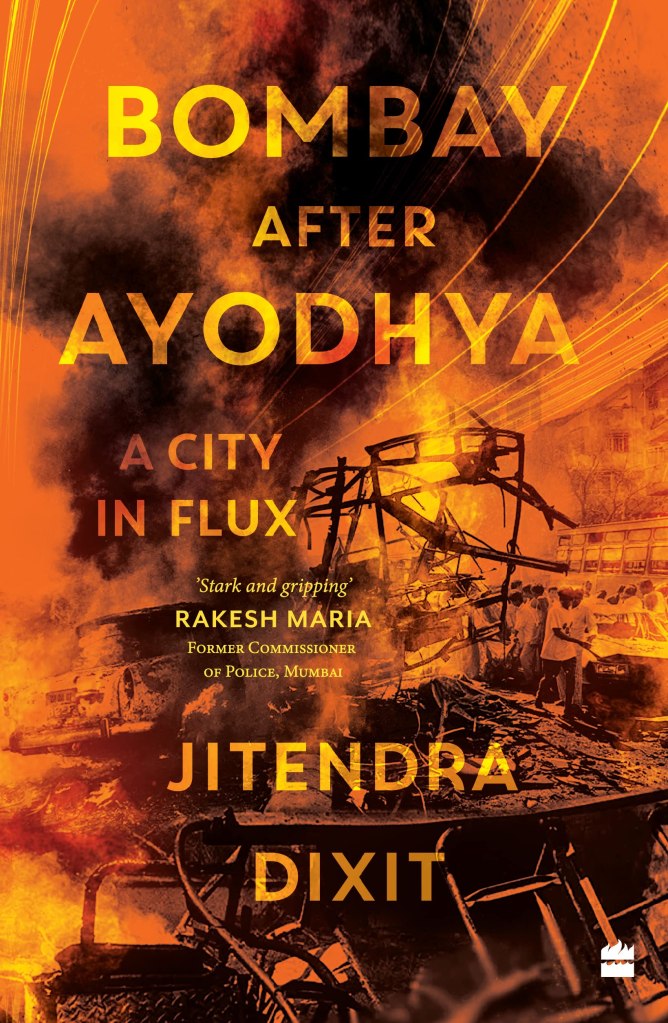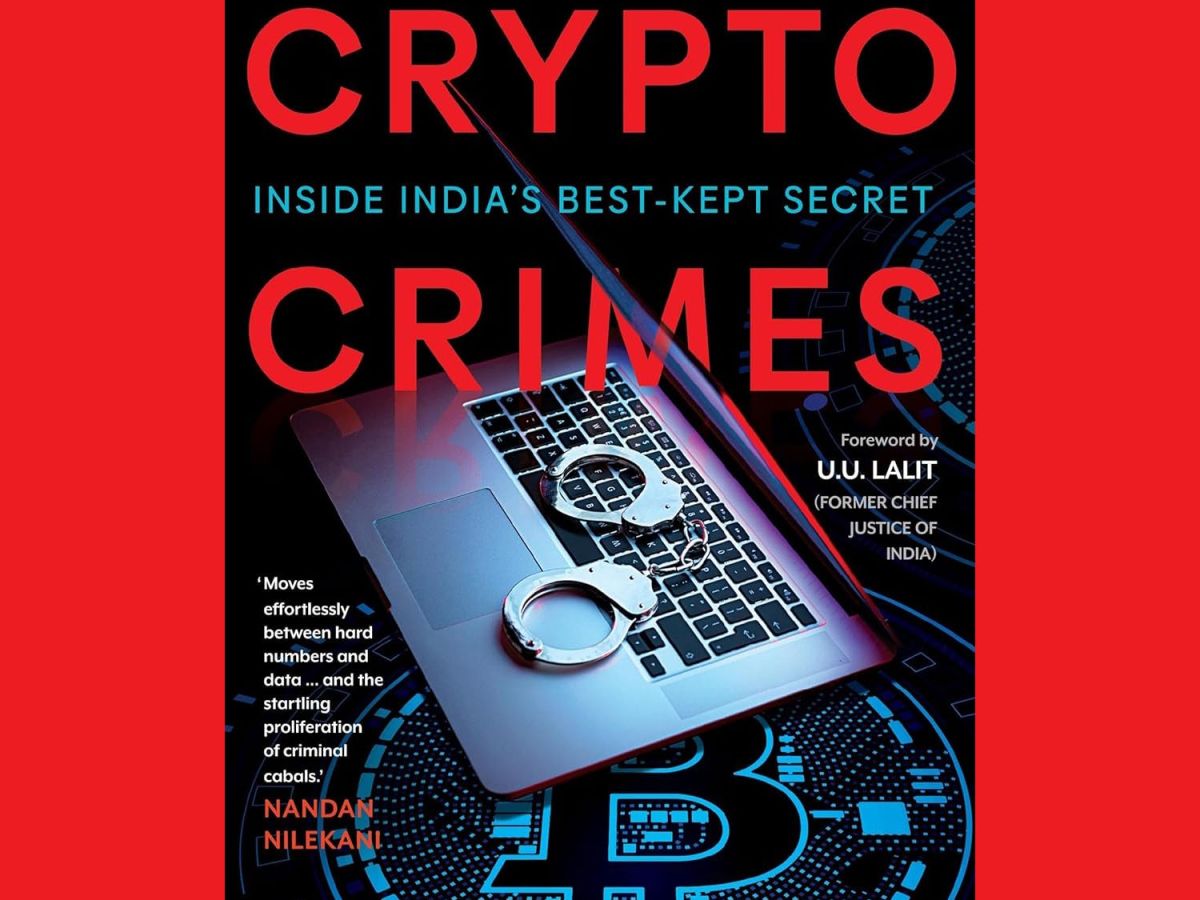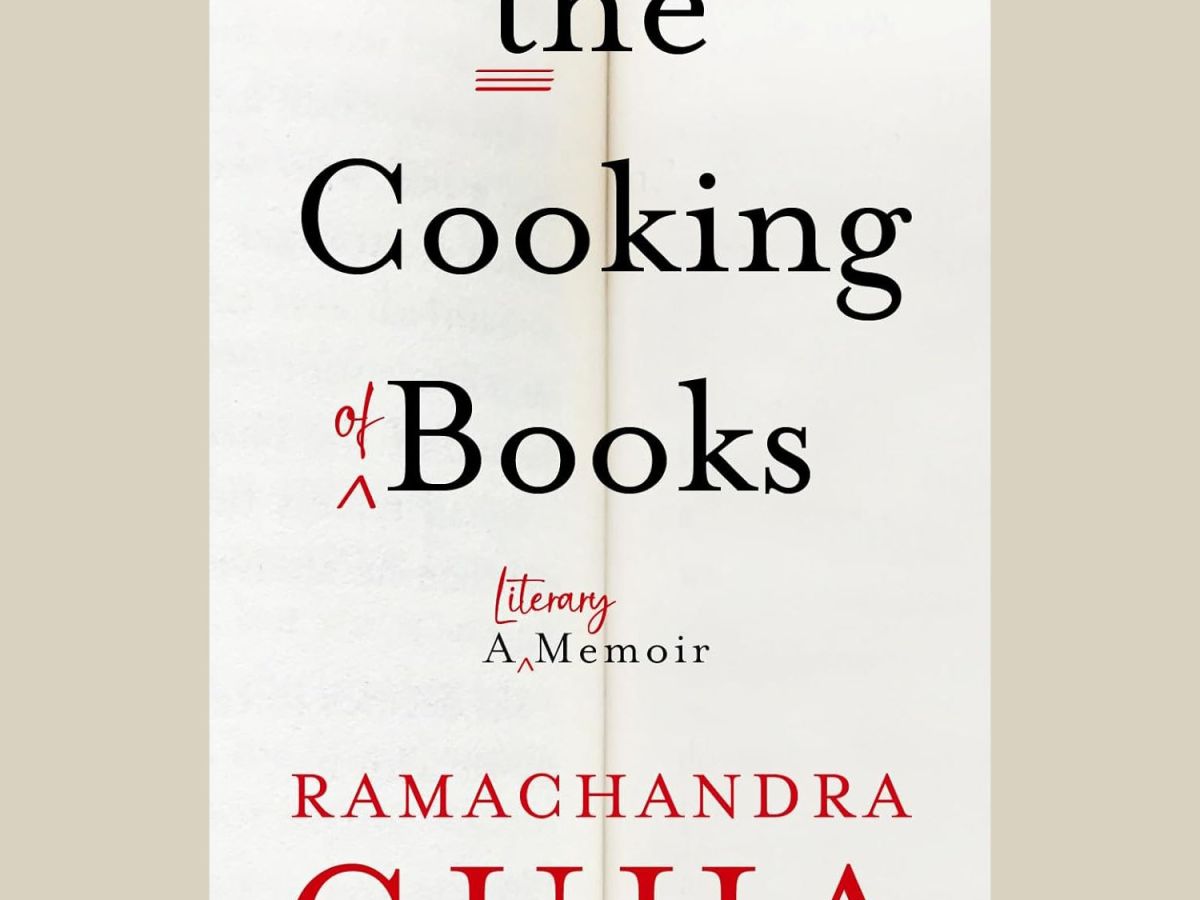Author of Bombay After Ayodhya: A City in Flux, which was released in December last year, Jitendra Dixit has worked in television journalism for almost 25 years. A broadcast journalist specialising in reporting on politics, crime and conflicts, Jitendra is a man of many talents; he is a bestselling author who writes both fiction and non-fiction, a blogger and a PADI-certified scuba diver. Here, he talks to BooksFirst about his latest book, the violence that shook Bombay in the early-1990s, and the changes that the city has seen in more recent years. Of course, we also discuss some of his favourite books and authors.
Having been born and brought up in Bombay, you have a special affinity for the great city. So, what was it that inspired you to write your latest book, Bombay After Ayodhya? Why do you think it’s important to revisit the memory of those dark days?
I am indeed in love with the city I was born and brought up. While I was working on my previous book Valley of Red Snow – Kashmir Beyond 370, I came across a few books by Kashmiri authors who were teenagers when militancy began engulfing the Kashmir valley in the early-1990s. They narrated what they witnessed while growing up in Kashmir. I too was a teenager in the 1990s and reading these Kashmiri authors made me think that Bombay of the 1990s was no different than the Kashmir valley during the same period… there were daily killings and shootouts, and Kashmir appeared daily in newspapers. Bombay also witnessed daily bloodbaths due to gangwars and killing by gangsters for extortion. In both places, youngsters were brainwashed for taking up guns. In Kashmir, it was for separatist ideology and in Bombay, it was for money.
Although there is abundant material available in the public domain that offers good information on the Bombay riots, like the Srikrishna Commission’s report and reports by various mon-governmental fact-finding committees, being a native of Bombay and having grown up there, I’ve been a firsthand witness to some of the city’s major events, conflicts, and disasters, and I wanted to share those experiences from my point of view. I always wanted to tell my story as somebody who not only witnessed that carnage but was also affected by it. Twice, during the riots, I had to abandon my home along with my family members to escape getting killed.
It’s vital to educate the youth on the atrocities of communal clashes. I’ve witnessed the brutality firsthand as a young adult, but it’s crucial for those born in this century to understand it as well. These days, we’re seeing a concerning trend where leaders are fanning the flames of hate and exploiting emotions for their own gain. If we don’t heed the lessons of the past, we’re doomed to repeat them. I hope this book will serve as my contribution to the battle against communalism. Those riots have impacted various spheres of Mumbai from its politics to its underworld, businesses, real estate, social fabric and so on. This book is an attempt to chronicle those changes.
What are your own personal memories of the violence that happened in Bombay during the early-1990s? What mental and emotional impact did it have on you, and your friends and family? Would you say that those days left a lasting impact on you in some ways?
Yes, I was thirteen years old and a student in grade 8 when both the phases of riots and serial blasts happened in Mumbai. I lived in the Masjid Bunder area also known as Bamabai Number Teen which had seen tremendous violence in various forms. Firstly, the area was a battleground for the gangs of Dawood Ibrahim and Pathans. Dawood residence at Pakmodia Street was hardly two kilometres away from my home and we share the same pin code number -400003. Secondly, most of the incidents that made headlines during 1992-93 happened within 500 metres radius of my home, like the police firing on Suleman Bakery, the crude bomb attack on the police commissioner and the murders of two Mathadi workers that triggered the second round of riots in January 1993. I have seen people getting hit by bullets and men with no criminal records willing to indulge in violence due to the atmosphere of fear and hatred that prevailed during that time. Out of the 12 locations that were bombed on 12 March 1993, one location was near my home at Katha Bazar. It was here that for the first time I saw parts of human bodies scattered all around.
So much exposure to violence at such a young age surely had an impact on me. I think this was the reason that led me to become a journalist and an author who largely writes on crime and conflicts. Talking about its mental and emotional impact, I would say, it affected me and other members of my family differently. While my family members got drawn more towards right-wing and saffron ideology, I became a centrist who is more interested in investigating the causes of conflicts and finding out means to prevent them.
In the three decades that have passed since the violence that happened in 1992-93, what major and significant changes have you observed in Bombay’s socio-cultural fabric? Have people in Bombay been irrevocably divided over issues of religion?
Mumbai is a city of contradictions. On the one hand, it is a cosmopolitan city where people from across the globe come and indulge in different kinds of economic activities, but at the same time, the city reacts very violently when emotions are enflamed. Mumbai has seen conflicts based on religious, linguistic and regional identities. As far as the Hindu-Muslim relationship is concerned, the city has endured seven major clashes between the two communities between 1893 to 1993. After the 1992-93 riots, the two communities realised the futility of violence and there have been no Hindu-Muslim riots during the last thirty years in Mumbai. But things are becoming dangerous now. Children born at the dawn of this century aren’t aware of the consequences of communal clashes. With the advent of social media, it has become easier to propagate hatred or radicalise them. The political parties are brazenly contributing to communal polarisation. I see the situation as alarming and society must find out ways to contain the hatred before it gets too late.

What kind of response have you received for Bombay After Ayodhya? Any interesting or noteworthy response from anyone in the Maharashtra state government and/or Maharashtra bureaucracy?
Bombay After Ayodhya has been released just a few weeks back and many people are still reading it. The initial response is very encouraging, especially by the people who were in news during the last thirty years. Former Mumbai Police Commissioner Rakesh Maria has called the book ‘Stark & Gripping’ whereas veteran journalist Rasheed Kidwai says that the book is a ‘fascinating read.’ However, I was amazed by the response of Sanjay Raut, leader of Shiv Sena and executive editor of the party’s mouthpiece Saamna. He wholeheartedly appreciated the book, although it had some bitter words about him, his party and his leader. He recommended the book to everyone who wished to read what happened in Mumbai after the demolition of the Babri Masjid in Ayodhya and how that incident impacted various spheres of life in Mumbai.
You’ve worked as a journalist since the mid-1990s. What is your take on how journalism – especially television journalism – has changed and evolved in India over the last 20 years? In what ways has television journalism been impacted by the rise of the Internet?
I have much to say about TV journalism, but it will lead to controversy and will hurt members of my fraternity. However, I will limit myself to the words that most TV journalists are not doing journalism at all. Except for a few regional channels, most of the Hindi and English news channels are showing content that doesn’t fit into the global or traditional definition of journalism. TV news is marred with allegations of sensationalism, bias, toeing the line of the government and propagating jingoism, fake news and hatred. I have been a TV journalist for the last 24 years and today the so-called journalism lacks those elements which motivated me to choose this profession for my career. Now, writing non-fiction books are an extension of my journalism or rather I would say, I am keeping the journalist alive in me through these books.
The internet, like many other spheres of our life, has revolutionised the news industry as well. Now news content is largely consumed on mobile phones in video or text formats rather than TV. The monopoly of TV channels over ‘Breaking News’ has ended. Many news-breaks happen on Twitter.
Your work schedule must be hectic. Do you still get the time to read extensively? What kind of books do you generally enjoy reading? Any favourite genre? Any favourite authors? Any favourite Indian authors?
This is the most common questioned asked to me. When do you get time to write a book while working as a TV journalist? It is true that the life of a TV journalist is super-hectic and stressful and it becomes difficult to take out time for family or pursue some hobby. However, if you learn time management and inculcate some right habits, things become easy. My preference for using public transport has helped me in several ways. Although I have a sedan, I use it only on weekends for outings with my family. To travel for work, I prefer local trains. Every day while travelling between the office (Andheri) and home (Wadala), I get around 50 minutes. I use that time to read and write. I also spend around two hours every day either reading or writing before going to bed. I am addicted to writing and not able to sleep until I don’t scribble something (if I am not working on a book) on my notepad.
I mostly delve into non-fiction literature that deals with conflicts and disasters. Some of the books that have been particularly insightful for me include Anita Pratap’s Island of Blood, AA Khan’s Surrender, Suketu Mehta’s Maximum City, Dhawal Kulkarni’s Cousins Thackeray, Thomas Manuel’s Opium Inc, Ananth Krishnan’s India’s China Challenge, Rahul Pandita’s Hello Bastar and Our Moon Has Blood Clots, Basharat Peer’s Curfewed Night, and Ashok Pandey’s Kashmirnama.
Would you like to name the two or three most memorable books that you’ve read in the last 1-2 years? Why do these stand out among others? Any books that are on your must-read list for 2023?
I was introduced to the works of Colombian journalist and author Gabriel Garcia Marquez through his book News of Kidnapping and now I am a fan of his writing. Gabos was a journalist who went on to become an author and I see myself following his footsteps. The way he has sketched the character of Pablo Escobar and the plight of abductees is remarkable. I plan to read more of his books in the future. I have also found great enjoyment in reading Jerome K Jerome and George Orwell.
Recently, I finished reading 90 Days by Anirudhya Mitra which is based on the Rajiv Gandhi assassination case. It is an unputdownable book which tells us how painstakingly the Special Investigation Team of the CBI cracked the case. After every two-three pages you come across something intriguing. My next book is likely to be on Maoist violence in India and I would be mostly reading books on that subject for better understanding and research.
Bombay After Ayodhya is available on Amazon
adventure advertising Allahabad Apple astrology audiobooks Banaras best-of lists Bombay book marketing business Calcutta cheap reads cityscapes corporate culture design fiction food Hinduism hippies history India Japan journalism journalists libraries literary agents memoirs memories money Mumbai music my life with books Persian photojournalism Prayagraj publishers publishing science-fiction self-help technology travel trends Varanasi wishlists
More Stories:
Book Review: Crypto Crimes – Inside India’s Best-Kept Secret
Cryptocurrency. Bitcoin. Digital assets. While the vast majority of people in India (and probably elsewhere in the world) have heard of these terms, most have very little or no understanding of what these really are, what they mean and what drives their value. And yet, many still believe that dabbling in these might somehow open…
The Psychology of Secrets: An Excerpt
‘We all keep secrets and there’s a one in two chance that those secrets involve a breach of trust, a lie or a financial impropriety. They are the stuff of gossip, of novels and classic dramas, and they are a major part of our inner lives, even though the mental energy expended to keep them…
The Cooking of Books: A Literary Memoir
‘The strangely enduring and occasionally fractious friendship that developed between the famously outspoken historian Ramachandra Guha and his reticent editor Rukun Advani is the subject of this quite eccentric and thoroughly compelling literary memoir,’ says the publisher’s note, about The Cooking of Books: A Literary Memoir, which was published by Juggernaut Books earlier this year.…
The Foresighted Ambedkar: An Excerpt
Jurist, economist, social reformer and political leader, ‘Babasaheb’ Bhimrao Ramji Ambedkar was born in a small town in Madhya Pradesh on 14th April 1891. He was of Mahar caste – a dalit – who were at that time treated as untouchables and subjected to social and economic discrimination. However, the family moved to Bombay when…
The Dirty Dozen: An Excerpt
Published recently by Pan Macmillan India, N Sundaresha Subramanian’s The Dirty Dozen takes the covers off the financial wrongdoings and misdeeds committed by some well-known companies in India. ‘Over the last few years, we have increasingly been hearing about bad debts and the significant discrepancies between the financial health of some companies and that of…






